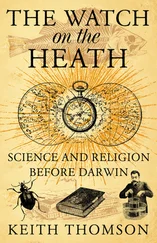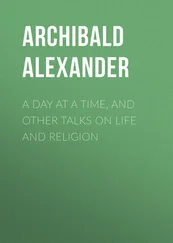Vikernes, Varg - Varg Vikernes - Sorcery and Religion in Ancient Scandinavia
Здесь есть возможность читать онлайн «Vikernes, Varg - Varg Vikernes - Sorcery and Religion in Ancient Scandinavia» весь текст электронной книги совершенно бесплатно (целиком полную версию без сокращений). В некоторых случаях можно слушать аудио, скачать через торрент в формате fb2 и присутствует краткое содержание. Жанр: Старинная литература, на английском языке. Описание произведения, (предисловие) а так же отзывы посетителей доступны на портале библиотеки ЛибКат.
- Название:Varg Vikernes - Sorcery and Religion in Ancient Scandinavia
- Автор:
- Жанр:
- Год:неизвестен
- ISBN:нет данных
- Рейтинг книги:3 / 5. Голосов: 1
-
Избранное:Добавить в избранное
- Отзывы:
-
Ваша оценка:
- 60
- 1
- 2
- 3
- 4
- 5
Varg Vikernes - Sorcery and Religion in Ancient Scandinavia: краткое содержание, описание и аннотация
Предлагаем к чтению аннотацию, описание, краткое содержание или предисловие (зависит от того, что написал сам автор книги «Varg Vikernes - Sorcery and Religion in Ancient Scandinavia»). Если вы не нашли необходимую информацию о книге — напишите в комментариях, мы постараемся отыскать её.
Varg Vikernes - Sorcery and Religion in Ancient Scandinavia — читать онлайн бесплатно полную книгу (весь текст) целиком
Ниже представлен текст книги, разбитый по страницам. Система сохранения места последней прочитанной страницы, позволяет с удобством читать онлайн бесплатно книгу «Varg Vikernes - Sorcery and Religion in Ancient Scandinavia», без необходимости каждый раз заново искать на чём Вы остановились. Поставьте закладку, и сможете в любой момент перейти на страницу, на которой закончили чтение.
Интервал:
Закладка:
The spirits had existed everywhere in nature, around man, and when the spirits turned into deities this did no change. The idea of sorcery still permeated the mentality and it was therefore not illogical for the religious man to think that man himself could take the role of a deity, by imitating it, and by doing so gain its powers. From being a sorcerer-king ruling the world the new king became a god-king. He did not only play the role of a deity; he was himself a deity! Everything a god did influenced the world in some way, and therefore the god-king had to be very careful. He should not touch the ground with his feet, so our forefathers most often carried their kings around on shields or in chairs, or pulled them in wagons. He could not cut his hair, beard or nails either, because if he did all the growths of nature would be cut down too – because he was the embodiment of nature. He was not allowed to travel by boat between the spring and autumn equinox, because this would carry him (and thus nature) off into a premature death. Some places there were so many restrictions to what the king could or could not do, what he had to wear, how and when he had to get up in the morning, where he could sleep, and so forth, that it must have been a real torment to be king.
Sorcery did not disappear with the coming of religion. Instead it became a part of religion, and the trees, flowers, rocks, metals, bushes, herbs, animals and birds that had previously been seen as manifestations of different spirits in nature became attributes to the deities deriving from these spirits. The spells and traditions of the sorcerers turned into religious festivals. At the same time, the spirits and sorcerers continued to exist, alongside the deities and their priests, for a very long time.
1.4 The Mistletoe
The oak was the tree that was most often struck by lightning, and because of this it was regarded by the sorcerers as the most sacred tree in the forest. More than any other tree the oak possessed the solar powers. In the autumn the leaves fell off the tree and it appeared to die, but sometimes one could, even in winter, find a small, green and lush growth in the tree crown. This was the mistletoe. The sorcerers believed, because they found the mistletoe in the crown of the tree, where the lightning most often struck, that it came from the sky. That it was transported from Heaven to Earth by the lightning.
The oak's life force had retracted to the mistletoe for the winter, and therefore the tree itself was unusable as a source of solar power. The mistletoe on the other hand was very potent! All the power of the Sun, the life force of the oak, the spirit of the oak, was concentrated into this tiny bough. The sorcerer therefore climbed into the tree crown and cut down the mistletoe, and the sorcerer possessing such a bough had all the power and energy of the Sun at his disposal. It was used as medicine, as a powerful wand, for love spells, to manipulate fire and as ward against dangerous sorcery.
In the Bronze Age the oak spirit had turned into a god, known in Scandinavia at that time as Balþuz (“shining white body”, “ball”), that we know from the Viking Age as Baldr (alias Bragi). In the myth about Baldr's death we learn that the gods had fun shooting arrows and throwing rocks at Balder, the oak tree, because he could not be harmed. After all, his life force was stored safely in the mistletoe. The belief that an individual's life force can exist outside the individual had great significance to the ancient man. Sorcerers could steal the life force from other creatures, like they could steal the life force of the oak by cutting down the mistletoe after the oak itself appeared to be dead.
Animals such as wolves and bears were dangerous even to man, just like winter was, with its darkness and freezing temperatures, and because of that the Scandinavians saw these animals as manifestations of the winter spirit. They believed that by killing these animals they could kill the winter spirit, and make the summer prevail and return. In fact, they were convinced they had to hunt and kill such animals for the summer to return. They could also steal the life force of these animals and use it to become still stronger and more powerful themselves. Every autumn, when winter approached, the sorcerers therefore went on a hunt for winter animals. They killed them, drank their blood, ate their hearts and took their hides. This sorcerer, most commonly known as berserkr (“bear-skins”) or ulfheiðinn (“wolf leathers”), stored his own life force in an egg, a box, a tree, an animal or somewhere else, and used the life force of the animal instead, or he wore the life force of the killed animal outside his own, as protection, leaving himself virtually invulnerable. Or so he believed anyway. In other parts of Europe they used other animals in this context, instead of or in addition to the wolf and the bear, such as lions and leopards in Ancient Greece and wild boars in Gaul and in Britain, but the idea was the same.
For the sake of simplicity I will throughout this book use the term “berserk” (sg.) or “berserks” (pl.) when referring to the different types of sorcerers with a totem animal.
We know of this totemic idea from the myth about the death of Baldr, but also from fairy tales, where sorcerers or trolls (“malicious spirits”) are invulnerable because they have hidden away their own life force, for example in an egg, in a duck, in a well on an island far, far away. Before the hero can kill the protagonist and save the princess he must find the egg and crush it.
1.5 The Matriarchy
Because of the belief that men had nothing to do with childbirth our ancestors lived, in the Stone- and Bronze Age, in matriarchal societies. The queen was found by arranging different races or contests, but always also a beauty contest. This is known in Norwegian as the bryllup (“wedding”), from Norse bruðlaup (“bride races”). She had to prove herself as the most skilled as well as the most beautiful of the women. She had to sew a hat, a shirt and a cloth, and finish the job without speaking a word, laughing or weeping. She had to gather wool, card and spin the yarn herself, or perform other tasks intended to prove how skilled and qualified she was for the job. The winner was elected not for life, but for a year at a time. To keep her title the queen had to win next year's contest too.
We know of these beauty contests from mythology, the most obvious being the Greek myth about Paris, who had to give an apple to the deity he thought was the most beautiful. From Scandinavian mythology we have the myth about Skaði, who had to choose a spouse based on looking only at the feet of the gods. The one with the most beautiful feet was chosen by her. We also know about this tradition from the fairy tales; where Snow White's step mother was desperate in front of her mirror, because it told her that she was not the most beautiful woman in the kingdom (and that she therefore could still not become queen). Snow White was still the most beautiful, so the wicked step mother tried to poison her, with a poisoned apple, the symbol that was supposed to show that Snow White was the most beautiful of them all, and which she therefore gladly accepted. We know other details about these races and contest from other fairy tales, where women have to help old women with domestic tasks, in order to profit greatly.
In Scandinavian mythology the goddess Skaði wanted to avenge her father (originally husband), who had been killed by the gods. They agreed to give her a (new) husband as compensation. She wanted to marry the most beautiful god, Baldr, but she had to choose a husband just by looking at their feet. She found a pair, which she believed to be Baldr's, but which turned out to be Njörðr's. At first glance this does not support my theory that the queens were elected because of their beauty, because in this myth we see a god being chosen by a goddess because of his beauty. However, this is only due to the fact that the myths were changed some time in the Iron Age, when the Scandinavian society went from matriarchy to patriarchy. It was originally a god who chose his wife because of her beautiful feet. Skaði was namely the name of a god and Njörðr the name of a goddess, known from the Bronze- and early Iron Age as the god Skanþan and the goddess Nerþuz respectively.
Читать дальшеИнтервал:
Закладка:
Похожие книги на «Varg Vikernes - Sorcery and Religion in Ancient Scandinavia»
Представляем Вашему вниманию похожие книги на «Varg Vikernes - Sorcery and Religion in Ancient Scandinavia» списком для выбора. Мы отобрали схожую по названию и смыслу литературу в надежде предоставить читателям больше вариантов отыскать новые, интересные, ещё непрочитанные произведения.
Обсуждение, отзывы о книге «Varg Vikernes - Sorcery and Religion in Ancient Scandinavia» и просто собственные мнения читателей. Оставьте ваши комментарии, напишите, что Вы думаете о произведении, его смысле или главных героях. Укажите что конкретно понравилось, а что нет, и почему Вы так считаете.












